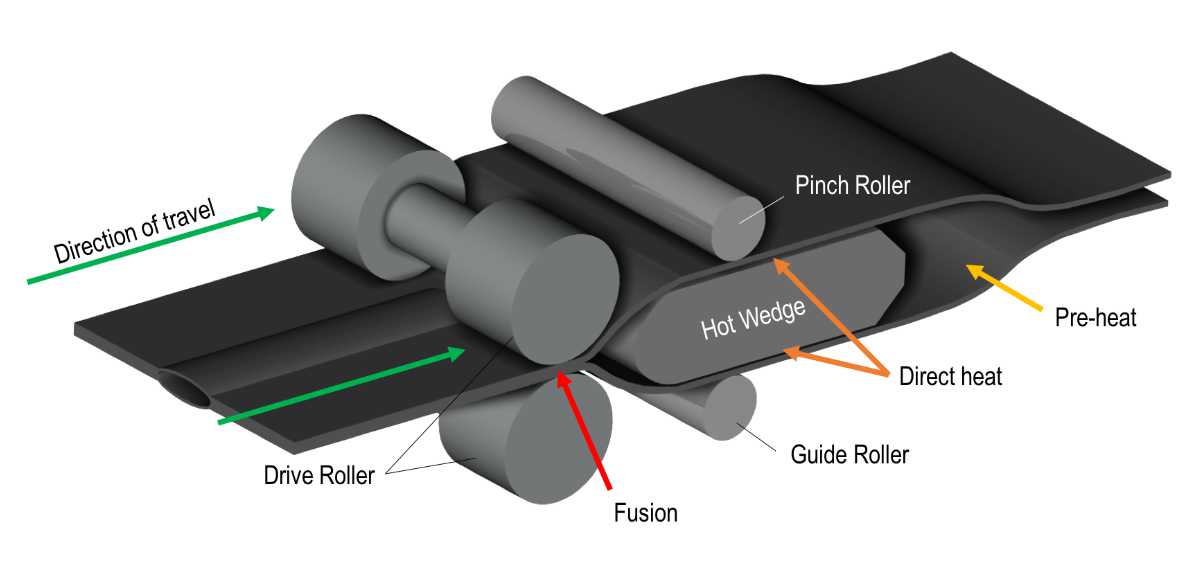
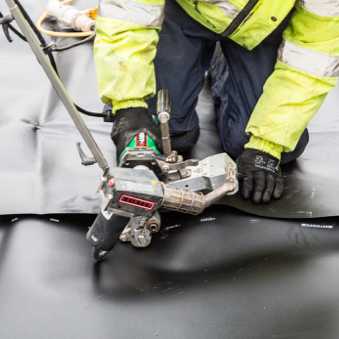
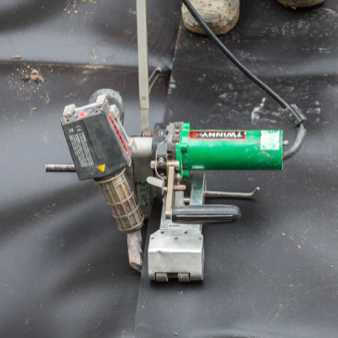
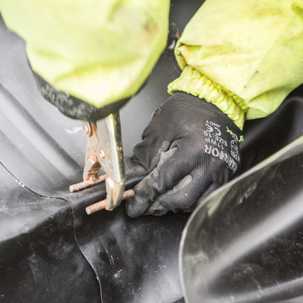
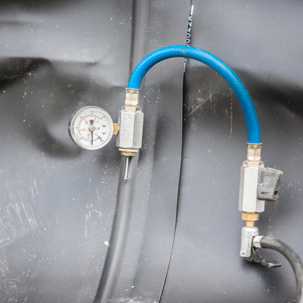
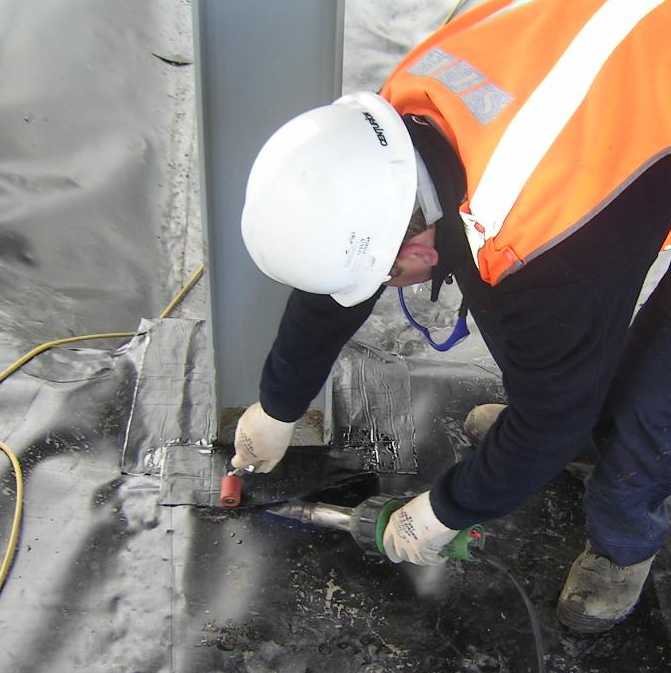
SEL Environmental Ltd Tel: 01254 589987 Email: sales@selenvironmental.com
Hot air twin wedge welding consists of placing a heated wedge, mounted on a self propelled unit, between two over-lapped sheets such that the surface of both sheets are heated above the membranes melting point. After being heated by the wedge, the overlapped panels pass through a set of pre-set pressure rollers, which compress the two sheets together to form a weld. The fusion welder is equipped with a temperature readout device that continuously monitors the temperature of the wedge.


Preparing the membrane prior to welding. The edges are overlapped by 100mm, cleaned, and dried before the hot wedge is moved into place.

Once clamped into position, the self propelled motor is engaged, and the welder will track along the membrane edge forming a twin seal weld.

A twin seal weld creates an unwelded channel. This unwelded channel allows the completed weld to be tested by inflating the sealed channel with air.

Pressure testing is witnessed by designated site personell and all quality assurance documents are signed.

In areas inaccessible for twin wedge welded seam or where site conditions dictate, overlap welds may be effected with the use of proprietary hot air guns and hand rollers. The equipment used must be specifically designed for the purpose with multi-stage variable adjustment on both heat and blower settings. The overlapped membrane is heated to softening point and fused together using the hand rollers to form a homogeneous fusion welded joint over a minimum width of 50mm.
Hot air welded joints may be tested using the Air Lance Method. A compressed air source will deliver 55 PSI minimum to a 5mm nozzle. The nozzle will be directed to the lip of the field seam in a near perpendicular direction to the length of the field seam. The nozzle will be held 100mm maximum from the seam and traversed at a rate not exceeding 12m per minute. Any loose flaps of 3mm or greater will require repair.
Home Services Welding Methods Contact
© Copyright SEL Environmental Ltd, Canal House, Bonsall Street, Blackburn, BB2 4DD